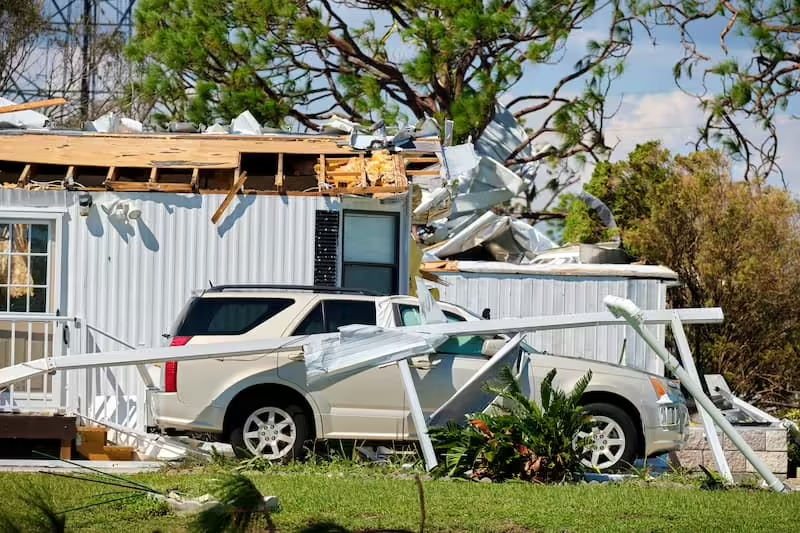As Hurricane Milton bears down on the southeastern U.S., its path and intensity have raised alarms across the region. The storm, now classified as a Category 4 hurricane, is expected to make landfall along Florida’s west coast, with authorities declaring states of emergency in Florida and neighboring states in anticipation of the potential devastation.
AMPA, Fla. (AP) — Hurricane Milton weakened slightly Tuesday but remained a ferocious storm that could deliver a once-in-a-century direct hit to the populous Tampa Bay region. With towering storm surges anticipated, the storm could turn debris from Hurricane Helene’s devastation just 12 days ago into dangerous projectiles.
Almost the entire west coast of Florida is under a hurricane or tropical storm warning as Milton, boasting 145 mph (230 kph) winds, spins just off Mexico’s Yucatan Peninsula, pulling energy from the Gulf of Mexico’s warm waters. The storm is expected to maintain its strength as it crosses Florida, prompting hurricane warnings for parts of the eastern coast as well.
Milton’s center could make landfall in the Tampa Bay area Wednesday night, impacting a population of over 3.3 million residents. The county housing Tampa has ordered evacuations for areas adjacent to the bay and for all mobile and manufactured homes by Tuesday night.
Despite the warnings, many residents remain resolute about staying put. In Riverview, drivers lined up for gas expressed their determination to weather the storm. “I think we’ll just hang, you know – tough it out,” said Martin Oakes of Apollo Beach. “We got shutters up; the house is all ready. So this is sort of the last piece of the puzzle.”
Jaime Hernandez, the emergency management director for Hollywood on Florida’s Atlantic Coast, emphasized the importance of preparedness. He encouraged residents to make a plan, assemble an emergency kit, and stay informed. Key supplies include nonperishable foods, water, and medical items, as power outages could limit access to resources.
The general guideline is to store one gallon (3.8 liters) of water per day for each person for about seven days. Hernandez also advised keeping cash on hand since ATMs may not operate during emergencies.
Local officials stress the importance of listening to emergency management authorities for the latest evacuation information and recommendations. As Hurricane Milton approaches, the focus shifts to ensuring safety and effective recovery efforts for those affected.
Evacuations and Precautionary Measures
Coastal areas are experiencing mass evacuations as residents heed warnings from officials. In particular, the counties along the Gulf of Mexico are urging citizens to leave low-lying areas that are likely to be affected by storm surges. Additionally, military installations such as Naval Station Mayport are taking extensive precautions, moving ships and securing aircraft to ensure safety.
Impact Zones and Forecast
Meteorologists predict significant damage across Florida, Georgia, and the Carolinas due to Hurricane Milton’s fierce winds and torrential rain. The storm is expected to bring severe flooding, storm surges, and sustained high winds that could lead to extensive power outages and infrastructure damage.
Recovery Efforts
In response to the impending crisis, military and National Guard units are mobilizing to assist in disaster relief efforts. Advanced technology, including drones, is being deployed for search-and-recovery operations, providing crucial support in assessing damage and locating stranded individuals.
Government and Public Response
Federal and state governments are coordinating closely to implement disaster relief strategies. Public advisories are being issued, offering resources and guidance for residents in affected areas. Local emergency management teams emphasize the importance of staying informed and prepared.
Conclusion
Looking ahead, long-term recovery projections indicate that the region may face a lengthy rebuilding process. The impact of Hurricane Milton serves as a stark reminder of the importance of preparation and resilience in the face of natural disasters, highlighting the need for communities to come together and support one another during challenging times.



